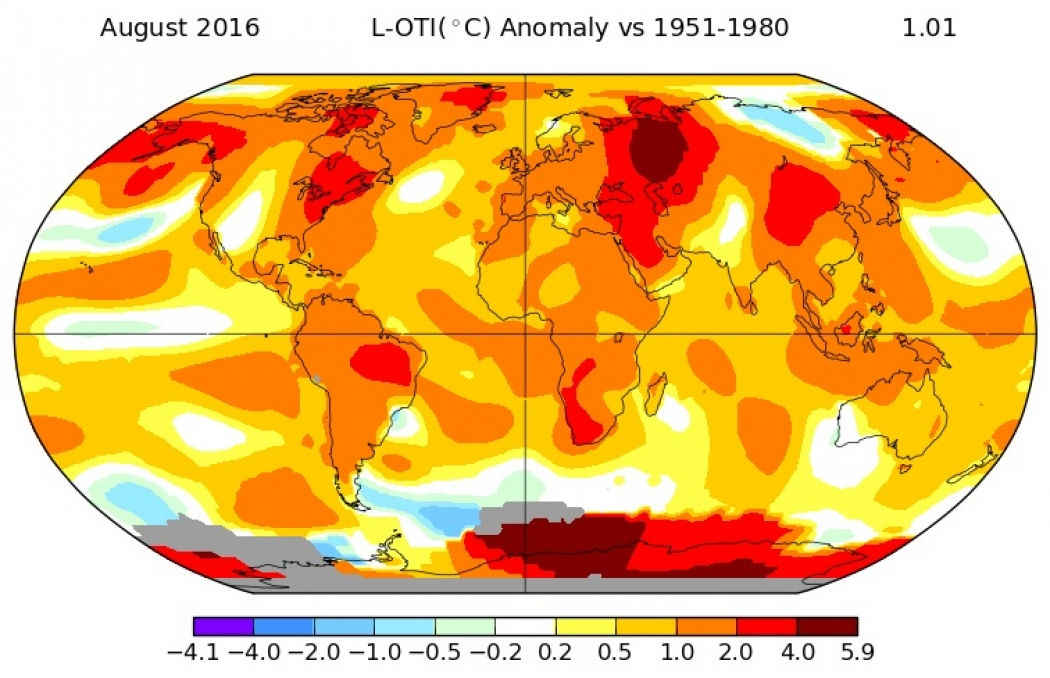It was also thought that July would likely be the last record hot month of the year, given the dissipation of El Niño.
In NASA's dataset, August marks the 11th record-setting month in a row. That streak goes back 15 months through July in data from the National Oceanic and Atmospheric Administration. Each agency handles the global temperature data slightly differently and uses a different period of comparison, leading to slight differences in the monthly and yearly temperature numbers. Overall, though, both datasets show clear agreement in the overall warming trend.
That trend is what Gavin Schmidt, director of NASA's Goddard Institute for Space Studies, and other climate scientists emphasize. It is that excess heat that has accumulated over decades thanks to rising levels of greenhouse gases that accounts for the bulk of this year’s record warmth, with El Niño providing only a small boost.
"Monthly rankings, which vary by only a few hundredths of a degree, are inherently fragile," Schmidt said in a statement. "We stress that the long-term trends are the most important for understanding the ongoing changes that are affecting our planet."
International negotiators hope to curtail that long-term trend by limiting warming to less than 2˚C (3.6˚F) over pre-industrial levels by the end of the century. There have even been discussions to aim for an even more stringent target of 1.5˚C.
To show how close the world already is to surpassing that goal, Climate Central has been averaging the NASA and NOAA temperature data each month and comparing that number to the average from 1881-1910, closer to preindustrial times.
Through July, the global temperature for the year was 1.31˚C (2.36˚F) above the average from that period. A new average will be calculated through August when NOAA releases its temperature data on Sept. 20.
Whether September will continue the record streak is uncertain, but regardless of where it falls, there is already a greater than 99 percent chance that 2016 will take the title of hottest year, Schmidt has said.
Source: Live Science | 14 September 2016














